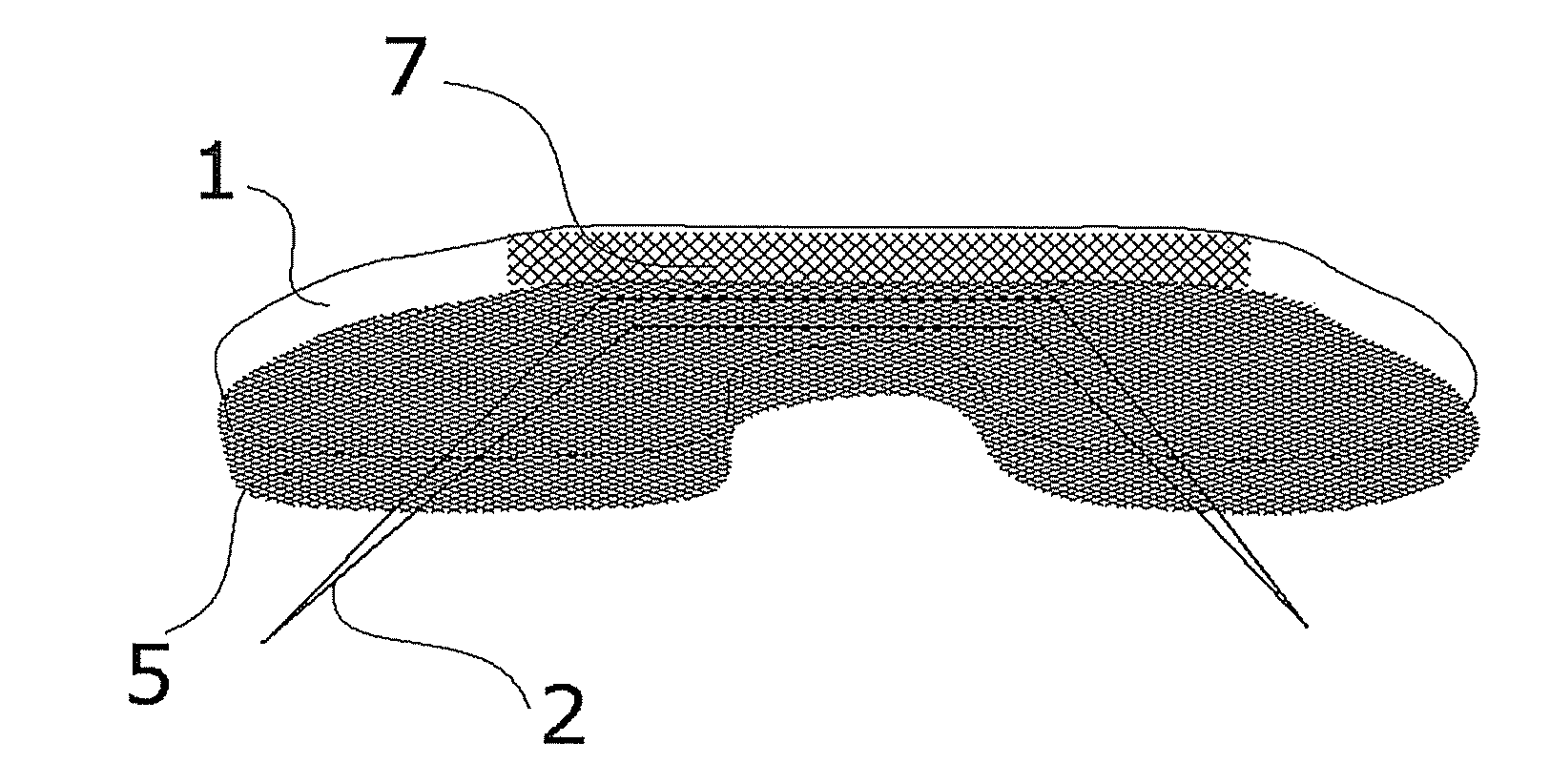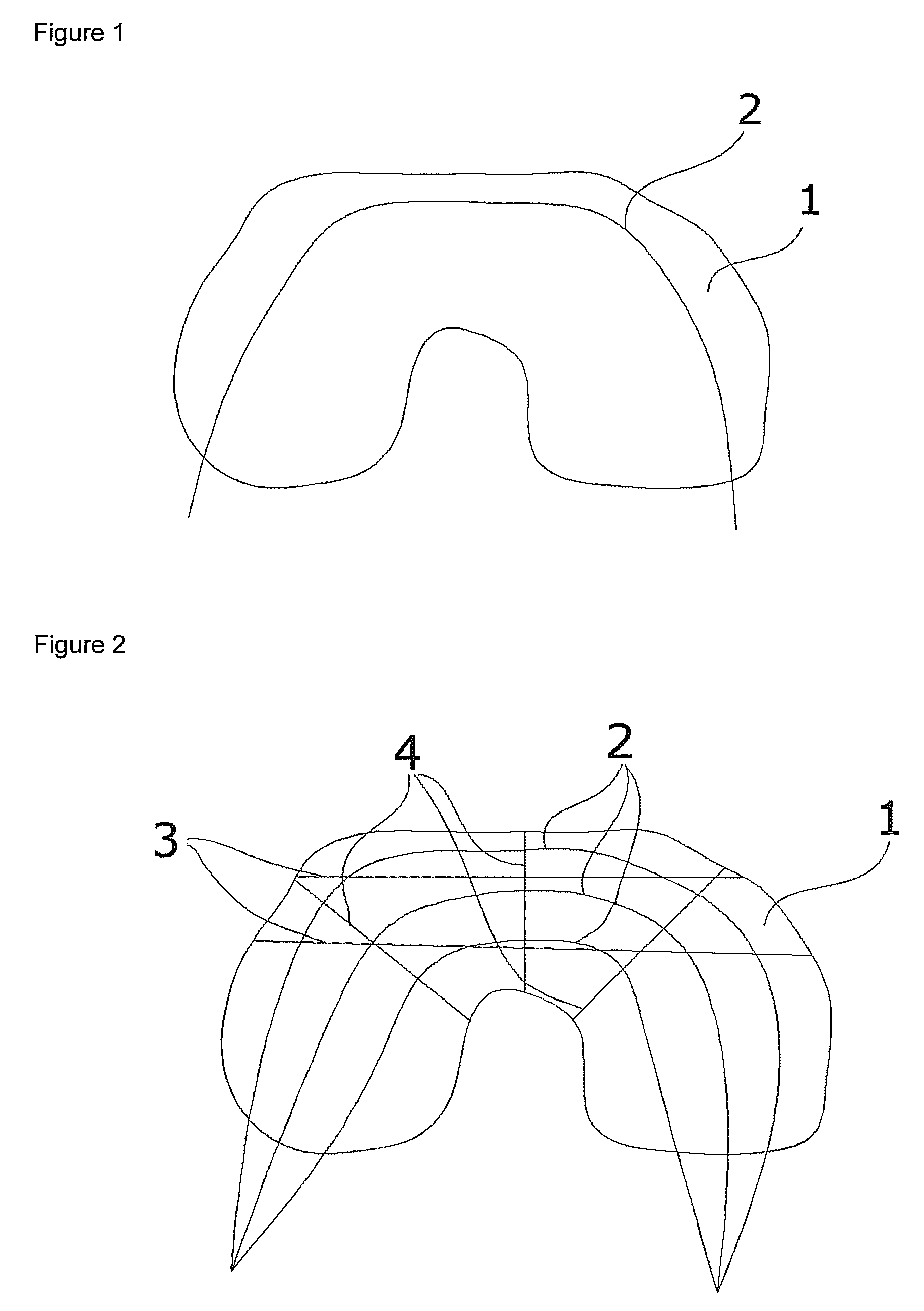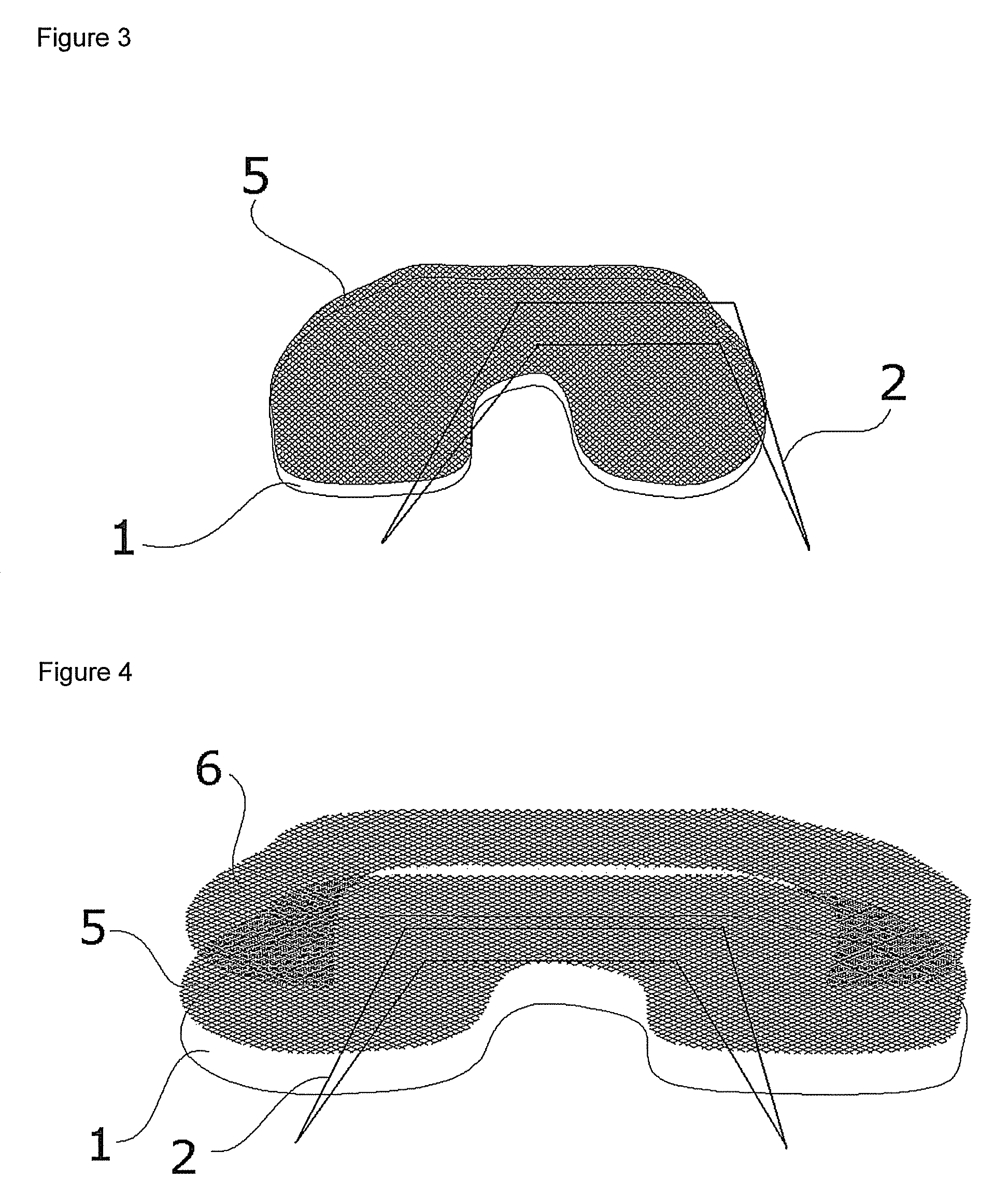Biocompatible material and prosthetic device made thereof for the replacement, repair and regeneration of meniscus
a biocompatible material and meniscus technology, applied in the field of prosthetic devices, can solve the problems of increased strain and high pressure areas, no effective treatment methods for meniscus lesions, irreparable damage to the central part of the meniscus,
- Summary
- Abstract
- Description
- Claims
- Application Information
AI Technical Summary
Benefits of technology
Problems solved by technology
Method used
Image
Examples
example 1
Preparation of a Prosthesis in the Form of a Meniscus Base on HYAFF® 11-p75 and PCL in a Ratio of 30:70, Containing Tissue of PLA / PGA
[0089]Preparation of the prostheses is performed by a series of steps, namely:
Solubilisation of the poly-εCaprolactone
[0090]22.37 g of poly-εCaprolactone (PM 60,000) are dissolved in a mixture of solvents composed of 53.6 ml of THF (tetrahydrofurane), 15 ml of DMSO (dimethylsulphoxide) and 7.4 ml of ethanol (EtOH), at a temperature of 30° C.; a solution of PCL with a concentration of 294 mg / ml is thus obtained.
Preparation of the Mixture of Salts
[0091]The following salts are mixed[0092]234.75 g of NaCl crystals with granulometry between 315 and 400 μm[0093]8.75 g of NaHCO3 with granulometry between 140 and 400 μm[0094]6.5 g of citric acid with granulometry lower than 200 μm;
Preparation of the Mixture
[0095]To the mixture of salts 9.635 g of HYAFF® 11-p75 are added, and the mixture is then amalgamated for at least 20 minutes in a mechanical mixer. The sol...
example 2
Preparation of a Prosthesis in the Form of a Meniscus Based on Total HYAFF® 11 and PCL in a Ratio of 40:60, Containing Evenly Distributed PLA Fibres
[0107]Preparation of the prostheses is characterised by a series of steps, namely:
Solubilisation of poly-εCaprolactone
[0108]19.2 g of poly-εCaprolactone (PM 60,000) are dissolved in a mixture of solvents constituted by 46.4 ml of THF (tetrahydrofurane), 13 ml of DMSO (dimethylsulphoxide) and 6.6 ml of ethanol (EtOH), at a temperature of 30° C.
Preparation of the Mixture of Salts
[0109]The following salts are mixed[0110]201.24 g of NaCl crystals with granulometry between 315 and 400 μm[0111]7.52 g of sodium bicarbonate with granulometry between 140 and 400 μm[0112]5.59 g of citric acid with granulometry of less than 200 μm;
Preparation of the Mixture
[0113]To the mixture of salts 12.8 g of total HYAFF®-11 are added, followed by 20 minutes in a mechanical mixer. The poly-εCaprolactone mixture is then added and amalgamated for at least 30 minut...
PUM
| Property | Measurement | Unit |
|---|---|---|
| temperature | aaaaa | aaaaa |
| temperature | aaaaa | aaaaa |
| concentration | aaaaa | aaaaa |
Abstract
Description
Claims
Application Information
 Login to View More
Login to View More - R&D
- Intellectual Property
- Life Sciences
- Materials
- Tech Scout
- Unparalleled Data Quality
- Higher Quality Content
- 60% Fewer Hallucinations
Browse by: Latest US Patents, China's latest patents, Technical Efficacy Thesaurus, Application Domain, Technology Topic, Popular Technical Reports.
© 2025 PatSnap. All rights reserved.Legal|Privacy policy|Modern Slavery Act Transparency Statement|Sitemap|About US| Contact US: help@patsnap.com



